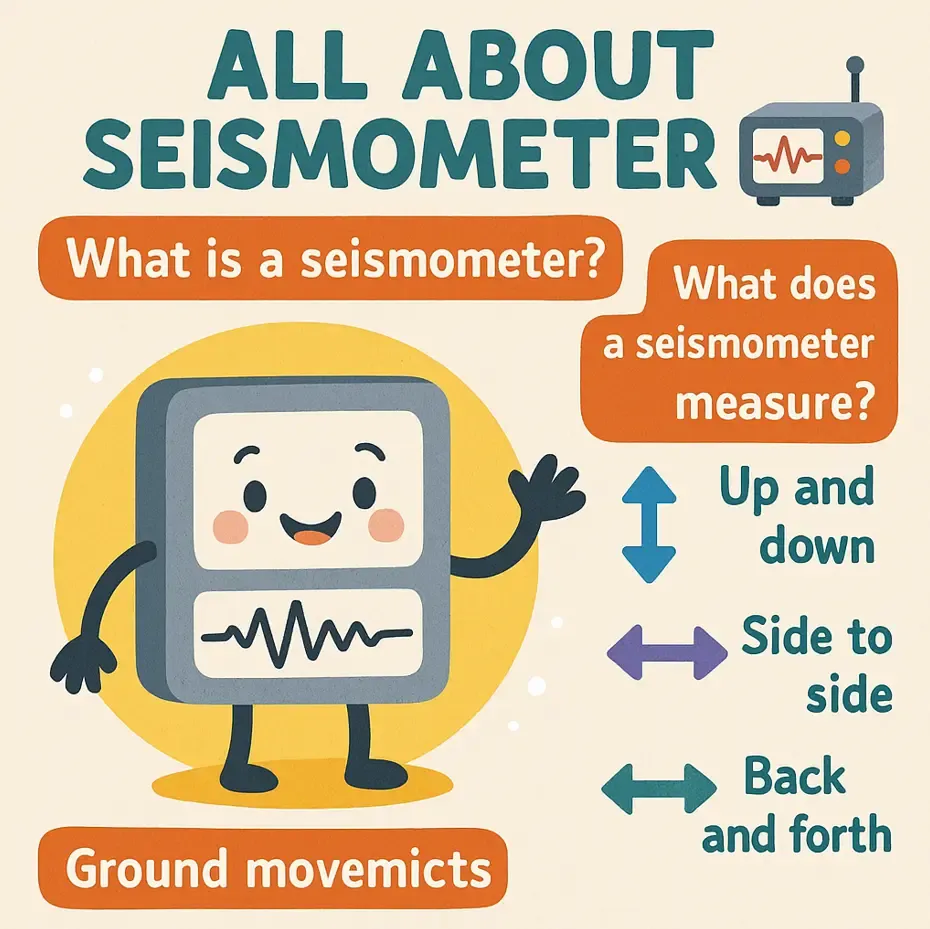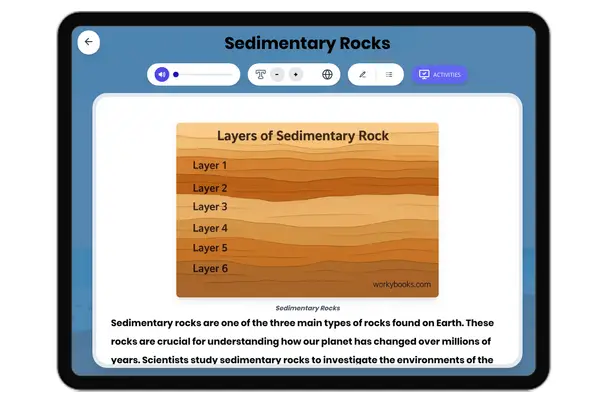All About Seismometers — Reading Comprehension
Grades
- 5
- 6
- 7
- 8
Standards
- MS-ESS3-2
- MS-ESS2-3
- RST.6-8.2
PRINT+DIGITAL RESOURCE
This learning resource is available in interactive and printable formats. The interactive worksheet can be played online and assigned to students. The Printable PDF version can be downloaded and printed for completion by hand.
About This Reader
This informational science passage explores seismometers and their role in measuring earthquakes, designed specifically for middle school readers with a Flesch score of 65. The content aligns with NGSS standards MS-ESS2 (Earth's Systems) and MS-ESS2-2, supporting students' understanding of how scientists gather data about Earth's structure. The passage explains what a seismometer is, how it measures ground movement during earthquakes, and the scientific principles behind its operation including inertia. Supporting both Common Core Reading Informational Text standards and NGSS Science and Engineering Practices, this text helps students analyze data, understand cause and effect relationships, and recognize how scientific tools help monitor natural hazards. The passage integrates crosscutting concepts like systems thinking and builds knowledge of Earth Science topics while supporting comprehension of technical vocabulary through accessible explanations.
Perfect For:
👩🏫 Teachers
- • Reading comprehension practice
- • Auto-graded assessments
- • Literacy skill development
👨👩👧👦 Parents
- • Reading practice at home
- • Comprehension improvement
- • Educational reading time
🏠 Homeschoolers
- • Reading curriculum support
- • Independent reading practice
- • Progress monitoring
Reading Features:
📖
Reading Passage
Engaging fiction or nonfiction text
❓
Comprehension Quiz
Auto-graded questions
📊
Instant Feedback
Immediate results and scoring
📄
Printable Version
Download for offline reading
🔊
Read Aloud
Voice-over with word highlighting






















